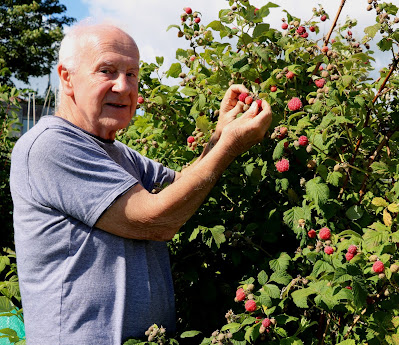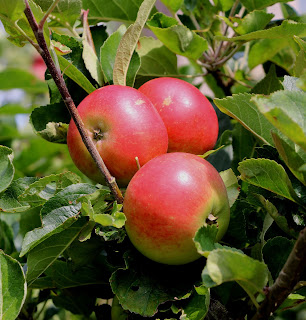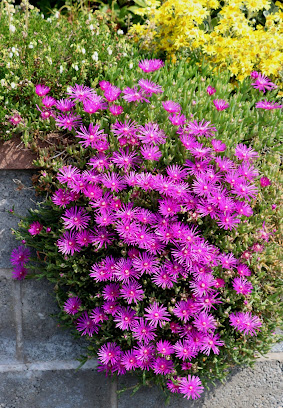BACK TO THE ALLOTMENT
Although gardening is very much in focus just now as lockdown and lack of holidays abroad has meant many folk have been busy at home in their gardens. My daily exercise is most often in our garden around the house or up at City Road on the allotment plot. You then become very aware of how plants are growing and if success is down to your skills or just great weather.
 |
| Raspberry Polka |
 |
| Bramble Helen |
The heavy rains that ended the long dry sunny spell did no favours for my onions as white rot affected a lot of them, so they all got lifted and dried off for storing.
All the brassicas have loved the growing weather, but a crop of large cauliflower Klapton were all ready at the same time. Anna however found a great recipe for roasted cauliflower soup both for immediate consumption as well as some for the freezer.
Swedes
are growing very strongly but crowding out an adjacent row of
parsnips, so again a few leaves have had to be removed.
Apple Discovery
Salads are normally grown as successional crops, but all had massive growth so each row of lettuce, rocket, radish and spring onion was more than we could use. I had one Lollo Rosa lettuce got a wee bit over excited and reached four feet tall, without going to seed, before I got round to cutting it.
 |
| Four feet tall Lettuce |
First crop of peas suffered some pigeon damage, but second crop of pea Onward is making up for it.
Fruit crop harvesting continues with bramble Helen ready from early August, autumn raspberry Polka, autumn strawberry Flamenco and now I am picking my first figs. However the fig bush has put on a massive amount of growth so it will get pruned once cropping has finished. Large pots of
Cape gooseberries placed against a warm south facing wall, enjoying Scotland’s brief heatwave, are all producing a good crop of fruit, but none ready just yet. Apple Discovery is swelling up and turning bright red, so should be ready to pick by end of August.
Flowers in tubs, baskets and borders have put on a great show but are now needing a wee rest,
before they grow again and go into late summer with their second flush. Geraniums have stopped growing but hope they will recover with a late summer flush and back to strong growth for autumn cuttings. Oriental lilies and gladioli are now at peak flowering as they revel in the summer weather.
Wee
jobs to do this week
 |
| Collect pansy seed |
Seed pods saved from the best pansies has dried off, cleaned up and seeds extracted ready for sowing in mid summer. Once a good crop of strong young seedlings emerge they will be pricked off into cellular trays to grow on to produce sturdy plants for autumn planting in tubs, pots, baskets and borders looking ahead to a display next spring and summer.
END











































